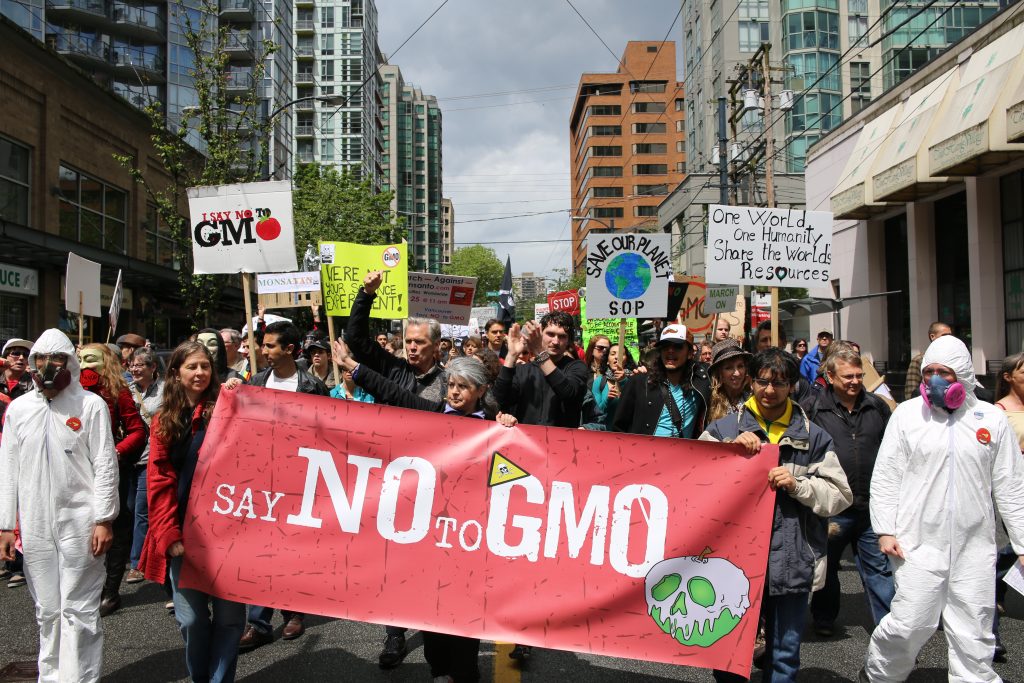This first in a series begins by looking back at GMOs and environmental law
Originally published at Legal Planet.
Although the big news in international biodiversity this week was the release of the summary of the first global assessment from a relatively new UN-affiliated body, the topic of another report warrants attention as well. Yesterday the International Union for Conservation of Nature (IUCN) published its findings on “the potential positive and negative impacts of synthetic biology on biodiversity conservation.” When those of us who follow environmental law and policy hear of biotechnology and biodiversity, I suspect that genetically modified (GM) crops and the associated controversies come to mind. Yet biotechnologies have continued to rapidly develop, yielding new methods and applications. In contrast to the past ones, some of these specifically are for environmental objectives, often to conserve or restore biodiversity. An explanation of these issues and the subject of the IUCN’s report requires a bit of background. This is thus the first of a short series of blog posts in which I’ll outline the emerging methods and applications, their politics, and their regulatory environment.
One can think of genetically modified organisms (GMOs), how they relate to the environment, and their governance needs as a series of generations. The first generation arose in the 1970s and 80s, consisting of bacteria that had been genetically modified using transgenics – that is, by adding genes from a different species – in order to further biological research, to produce pharmaceutical or food substances, to improve agriculture, and to remediate pollution. For example, Genentech got its start largely by using GM bacteria to synthesize human insulin. Because most (but not all) of these uses were indoors, governance focused on biosafety and containment. Political resistance to first generation GMOs was limited and local.
The second generation was GM agricultural plants and, to a lesser degree, animals that were initially developed in the 1990s. These crops could have higher yields, be resistant to diseases, contain their own pesticides, tolerate synthetic pesticides, last longer after harvesting, and have greater nutritional value. Unlike the first generation, these second generation GMOs were intentionally placed outdoors, albeit in managed agricultural settings. And also unlike the first, the testing, growth, and sale of transgenic agricultural plants and their products triggered widespread contestation and posed regulatory challenges. Because they were intended to be eaten, these agricultural GMOs provoked deep, instinctive reactions among those who perceived their food as perhaps contaminated. The issue entered policy agendas coincident with the development of governance to protect biodiversity, whose interrelated ecological complexes GMOs seemed the threaten. GMOs’ international regulation ended up in the 1992 Convention on Biological Diversity and its protocols, which in retrospect was arguably not the ideal institutional home. In Europe, regulation was based on the precautionary principle – which was enshrined in the 1992 treaty that established the EU – and concerns were heightened by the (unrelated) spread of bovine spongiform encephalopathy (“mad cow disease”) in the UK.
A sharp transatlantic divide arose over governing GMOs. The US regulates these based on the product (What is it? What effects could it have on people, crops, and the environment?) whereas the EU does so based also on the process (How was it made?), adopting strict rules that have amounted to a de facto prohibition. This division was exacerbated by the US’s refusal to ratify the Convention on Biological Diversity. In the 2000s, the US and other countries accused the EU of using its GMO regulations as unlawful barriers. (Although the World Trade Organization sided with the US, its ruling was mixed.) Throughout these debates, many environmental advocacy organizations opposed the testing, production, and sale of agricultural GMOs. Furthermore, many developing countries aligned themselves with Europe and likewise adopted restrictive regulatory regimes.
These debates persisted. In a 2012 ballot measure, California voters narrowly rejected a requirement that products with GM ingredients be labelled as such. Instigated by a 2016 law, the US Department of Agricultural recently developed rules for labeling food that contains bioengineered ingredients; these go into effect next year. The transatlantic divide has continued with how governing bodies’ responses to new CRISPR-based methods that “edit” genes instead of transferring genes from other species. In principle, such resulting organisms could have been developed through traditional breeding techniques, and thus do not clearly fall within some past legal definitions of GMOs. Last year, the US Department of Agriculture stated that it would not regulate products from gene edited organisms beyond their salient characteristics, such being “plant pests.” A few months later, the EU’s Court of Justice ruled that gene edited crops would be subject to the most restrictive of the Union’s regulations of GMOs, even though the definition there appears to not include gene edited organisms.
The third and fourth generations of GMOs are meant to be introduced into outdoor, non-agricultural – that is, more or less “natural” – environments, where they would live and reproduce. I’ll describe these, as well as synthetic biology, in subsequent posts. Stay tuned.

